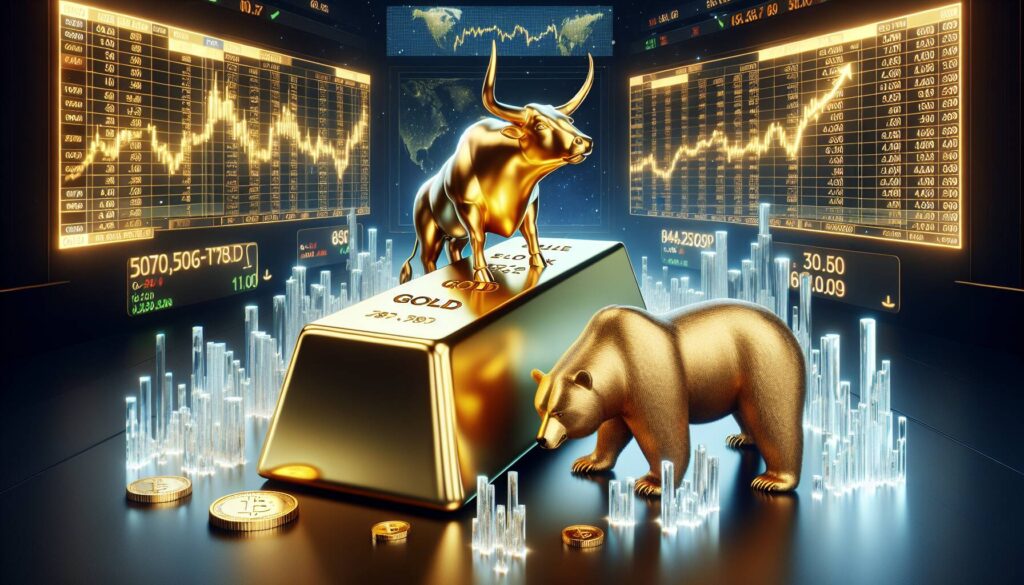The gold market is undergoing a notable transformation, characterized by a decline in central bank activity alongside a burgeoning interest in exchange-traded funds (ETFs) and gold-backed cryptocurrencies. Recent data reveals that minting of tokens backed by the precious metal has reached its highest level in three years, with over $80 million worth minted just last month, as reported by rwa.xyz. This uptick in token activity has led to a 6% growth in the market cap of these gold-backed cryptocurrencies, bringing it to a substantial $1.43 billion.
“The rise in token activity mirrors a broader trend in the gold market,” says the World Gold Council in its recent report.
Indeed, the council’s findings show that total gold demand for the first quarter of the year hit 1,206 tonnes, marking a 1% increase compared to the same period last year and achieving the strongest start to the year since 2016. However, central bank purchases, typically seen as a pillar of gold demand, dipped sharply, falling to 244 tonnes from 365 tonnes in the previous quarter. This shift indicates a changing landscape where investment demand is now taking the forefront, particularly through gold ETFs, which saw inflows more than double to 552 tonnes.
The surge in demand for gold has also had a significant impact on prices, with the average quarterly price reaching an impressive $2,860 per ounce—up 38% from the previous year. Nonetheless, recent trends indicate a minor dip of 2.35% last week, despite gold prices soaring an impressive 23.5% year-to-date. As riskier assets like cryptocurrencies gain traction, spot gold currently trades at $3,240. While traditional gold demand from jewelry has waned, falling to pandemic-era lows, bar and coin purchases remain robust, particularly in China, showing that interest in gold in its physical form continues to attract investors.

Shifts in the Gold Market: Implications for Investors
The gold market is undergoing significant changes that could impact both traditional investors and those interested in digital assets. Here are the key points to consider:
- Central Bank Purchases Declining:
The recent slowdown in central bank gold buying, with purchases dropping from 365 tonnes to 244 tonnes, could signal shifts in monetary policy and investment strategies.
- Growth in Gold-Backed Tokens:
Investment in gold-backed cryptocurrencies has surged, hitting a three-year high with over $80 million worth of tokens minted recently.
- Surge in Gold ETF Demand:
Gold ETFs have seen investment demand more than double, totaling 552 tonnes, indicating that investors are gravitating towards gold as a safe asset.
- Record Gold Prices:
The average quarterly price of gold reached a historic $2,860 per ounce, representing a 38% increase year-over-year, although it recently dipped by 2.35%.
- Bar and Coin Demand Remains Strong:
Despite a decline in jewelry demand to pandemic-era lows, the demand for gold bars and coins, particularly in China, has remained strong.
- Monthly Transfer Volume for Tokens Rises:
Digital transfer volume related to gold-backed tokens has jumped 77% to $1.27 billion, indicating a robust resurgence in digital investments.
These trends highlight a pronounced shift in how investors view gold, combining traditional methods with innovative cryptocurrency options, thereby expanding the avenues for investment in this timeless asset.
Shifting Currents in the Gold Market: A Digital Revolution
The dynamics of the gold market are undergoing a fascinating transformation, spotlighting the convergence of traditional investment methods and innovative digital assets. Central banks, long seen as the titans of monetary policy, are hinting at a gradual retreat, as evidenced by a notable decrease in their purchasing activity. This withdrawal creates a unique opportunity for exchange-traded funds (ETFs) and gold-backed cryptocurrencies, which are witnessing a significant uptick in demand. While central bank acquisitions plummeted to 244 tonnes, down from 365 tonnes in the previous quarter, ETFs have seen their investment demand more than double, reaching an impressive 552 tonnes. This shift suggests a tactical pivot among investors towards more accessible forms of gold investment, positioning new entrants in the digital spectrum at a competitive advantage.
The realm of gold-backed cryptocurrencies is particularly intriguing, with recent data revealing that over $80 million worth of these tokens were minted within just a month, pushing the market cap to $1.43 billion. The allure of such instruments comes from their ability to track the physical gold market closely while leveraging the benefits of blockchain technology, such as increased liquidity and frictionless transfers. Moreover, with monthly transfer volumes climbing 77% to $1.27 billion, it’s evident that investors are not merely dabbling, but are fully engaging with these digital assets. This burgeoning interest speaks volumes about the evolving landscape of investments where traditional gold is juxtaposed against new-age tokenization.
On the downside, the slowing demand for traditional gold applications like jewelry, which has hit pandemic-era lows, could signify a potential rift in the market. This decline poses challenges for manufacturers and retailers reliant on jewelry sales, while also raising questions about the sustainability of gold in its conventional forms as a luxury good. In contrast, the sustained demand for bars and coins, particularly in large markets like China, illustrates a continued appreciation for physical gold. This duality might create friction among stakeholders in the gold supply chain, as they may struggle with contrasting consumer preferences.
Investors looking to diversify their portfolios can find opportunity in this changing ecosystem. Gold-backed cryptocurrencies, for instance, could serve as a hedge against inflation and economic instability while offering the modern benefits of digital asset investment. However, caution must be exercised, as this shift may pose challenges for traditional gold investors who now face competition from a reinvigorated digital realm. Overall, while the transition may benefit forward-thinking investors, it may complicate the landscape for those firmly entrenched in conventional gold markets.

















